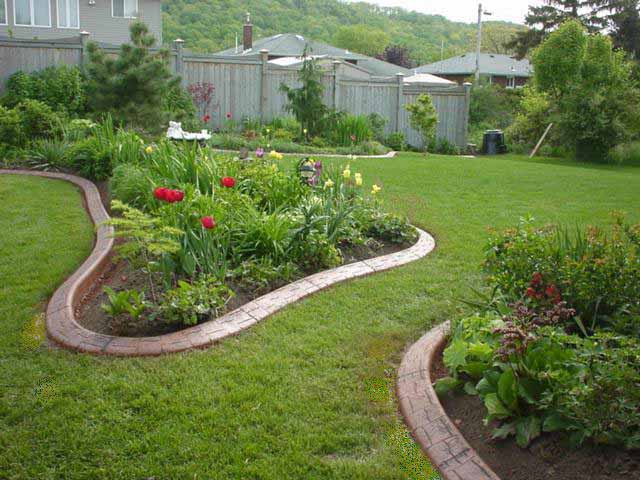
Landscape Curbing FAQ’S
Q: Is landscape curbing permanent?
A: The curbing we install is made of concrete. It is heavy, durable, and one continuous piece. This offers many benefits (please refer to the Benefits page). However, if you need to remove the curbing, simply have it cut or busted into smaller sections that can be disposed of.
Q: What is “ground preparation”?
A: We use a bed edger to create a trench from 1 to 4 inches deep (determined by customer preference and curbing choice) and approximately 9 inches wide. This trench is where the concrete curb will be placed. The yard, landscape, drive, sidewalk, or anything else on either side of the trench will not be disturbed.
Q: Why does the landscape curbing look like it is in sections?
A: What appears to be a break in the curbing is actually a control/expansion joint. This joint penetrates the curb about 40% of the way through. The concrete curb is still one continuous piece. The purpose of the joints is to allow for ground movement and expansion of the concrete due to outside temperatures. This technique is part of how we minimize the potential for the concrete to crack. If a crack does occur, it is more likely to stay contained within the joint and may not be noticeable.
Q: What are my colour choices?
A: Coloring the landscape curbing has almost unlimited options. We will explain different approaches such as putting color in the concrete mix vs. applying color coats after the curb is laid. The look of your curb and your satisfaction is critical to us, and we specialize in helping you reach a quality color choice. Of course, yours is the final decision.
Q: What do I do if the curbing cracks?
A: Concrete can crack. However, we utilize techniques, materials and equipment that minimize the potential for cracking. Our curb extruder, the expansion joints and using reinforced fiber mesh in our concrete mix help prevent cracking. But if visible cracking occurs, sections can be replaced and the concrete curb will still be one continuous piece.
Q: What about cracking, thawing, freezing, etc….?
A: We recommend only installing the landscape curbing after the ground has thawed. We put control joints every 2 to 3 feet and we use Nylon fiber reinforcing in our mix, which adds strength, durability and helps prevent cracking. Also we use air entraining agent. Air entrained concrete contains billions of microscopic air cells. These relieve internal pressure on the concrete by providing tiny chambers for expansion of water when it freezes, which result in concrete that is highly resistant to severe frost action and cycles of wetting and drying or freezing and thawing.
Q: What if I get lighted curbing and the lights quit working?
A: The lighting is a polycarbonate tube that snaps in and out of a groove in the curb. It is a series of pieces connected together, and therefore sections can be replaced without disrupting the entire run of lights.


